
Somewhat outdated by 1942, but still formidable «Divasteyor». The maximum speed is 430 km. h. Defensive armament – two machine guns. Until 1944, torpedoes had to be dropped from a height of 15 m, at a speed of 200 km. h. In this case, many of the «self-propelled mines» even with a direct hit on the target (along the normal) do not explode. The speed of movement of the Japanese torpedoes is 40 knots (about 70 km. H.), The American Mark 13 – 30 knots (50 km. H.), With a cruising range of 5200 m. Practically in the same year, the Divasteyors were replaced by Avengers. Throughout the year, American scientists solve problems with non-explosive torpedoes.
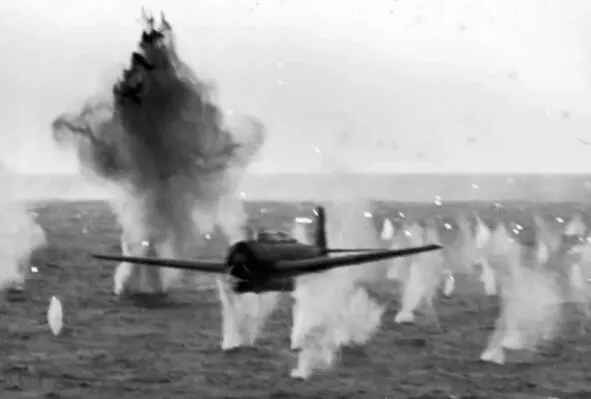
The only now Japanese aircraft carrier Hiryu still has 18 equipped Val and 6 Zero bombers. Samurai attack Yorktown. Seven dive bombers break through to the American aircraft carrier and achieve three hits. 5 dive bombers and 1 fighter are returning. 10 torpedo bombers are now ready to take off. Five surviving aircraft manage to achieve two hits. Yorktown is being towed to Pearl Harbor. A Japanese submarine sinks an aircraft carrier and a destroyer covering it on June 7. Photo – Japanese torpedo bomber stubbornly breaks through to Yorktown, second half of June 4, 1942. Armament – one machine gun, one 800-kilogram torpedo.
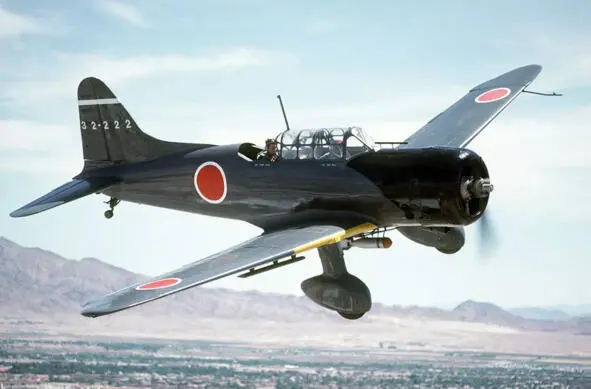
«Aichi D3A», in American terminology «Val», a Japanese carrier-based bomber. The maximum speed is 425 km. h., three machine guns, bomb load 250 kg.

Thirsty for revenge, the Enterprise and Hornet teams assemble a group of aircraft to attack. The Americans no longer have torpedo bombers, but they have 41 dive bombers. To repel the attack «Hiryu» has only 6 «Zero» fighters that have been put into operation. The Americans are losing three planes, but getting four hits with 450-kilogram bombs. The survivability teams succumb to numerous fires in the holds. On the morning of June 5, the Japanese command gives the order to sink the heroic Hiryu. Japanese light aircraft carriers, artillery and transport ships do not take part in the battle. The main group of Japanese retreats. American planes, as far as possible in conditions of worsening weather, damage it. Losses of the parties. Japan – 4 aircraft carriers, a heavy cruiser, 250 sea-based aircraft, 2,500 personnel. USA – heavy aircraft carrier, destroyer, 150 aircraft, 350 people irrevocably. Photo – aircraft carrier «Hiryu» after the attacks of American aircraft, evening June 4, 1942
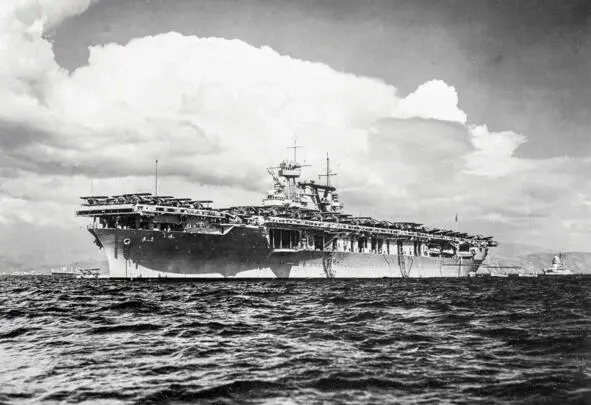
Yorktown a month before the battle… It was an era when men were men and women were women… White was white and black was black
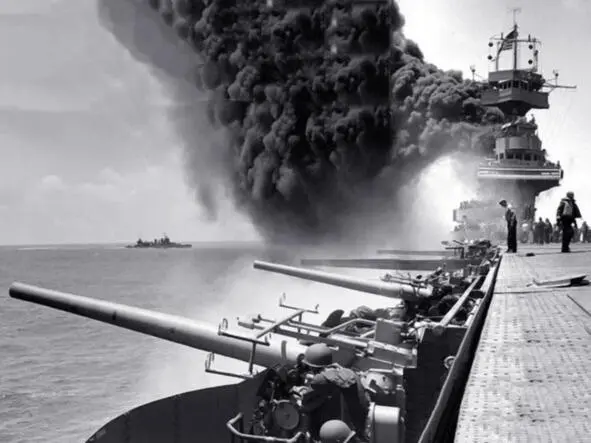
Yorktown doesn’t seem doomed yet

Yorktown and her escort destroyer en route to Pearl Harbor, June 4, 1942

Yorktown a few hours before its death
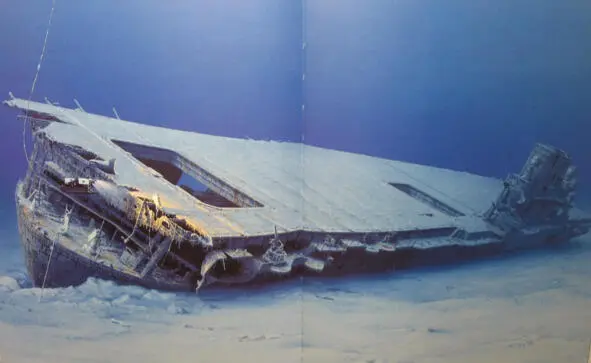
Yorktown
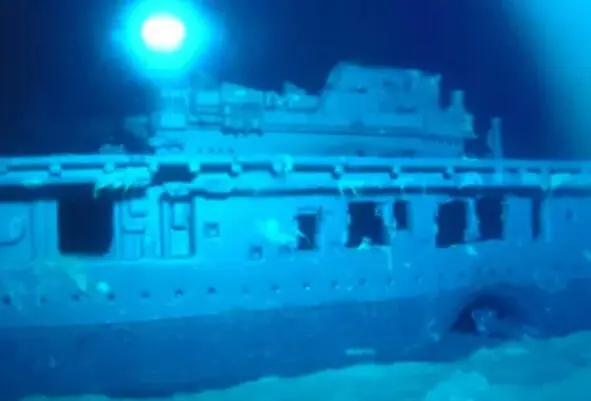
«Yorktown» is laid to rest at a depth of 5 kilometers. The figure is based on the data of the 1998 deep-sea expedition.

«Akagi»
Naval battles – lessons of history

Dear friends! We all know, of course, that history lessons cannot be skipped. But there are those who believe that they already know everything perfectly in their head. Without using proven, and generally speaking, at least any sources. We must be able to educate them in a reasoned manner. To win the next war (unfortunately, peace is impossible without them), we must remember everything about our past victories and defeats. We analyze in detail one of the first naval battles of the Russian-Japanese war of 1905. Again – the cruiser «Varyag», the hero of the song of the same name, which later became the march of Russian, Soviet, and again Russian, Naval Forces. The photo above is an armored cruiser Varyag. Displacement 6600 tons, length 129 meters, width 16. Deck armor 38—76 mm. Speed 24, 5 knots (35 km. H) Cruising range 10,000 km. Crew: 550 sailors and non-commissioned officers, 20 officers. Main armament: twelve 152 mm., Twelve 75 mm. guns, six mine-torpedo tubes. Colorized, initially black-and-white photograph – «Varyag» in Chemulpo Bay, 1904. The color of the pipes is believable, and according to the «traditions of the Russian fleet» misunderstood by the admirals of the Russian Empire (RI), it does not at all contribute to the stealth of warships
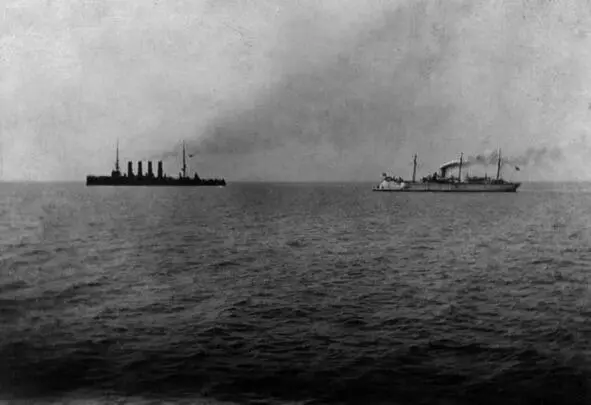
By and large, on the eve of the war, Korea is a protectorate of Russia. Several years ago, the Russian Empire demanded that Japan return to China the lands of the Celestial Empire that it had conquered during the war of 1895. The samurai obeyed, but harbored a grudge. While the army and navy of the Land of the Rising Sun were modernized, and their personnel exhausted themselves on exercises, the tsarist officers considered the maneuvers unworthy of their greatness «a game of war». So, in the Chemulpo bay there are two RI warships. … It is known about Japan’s ultimatum to the Russian government. The main point is to leave Korea (after all, Koryo, the ancestral home of the samurai) alone. A state of uncertainty. Communication only via Japanese-controlled telegraph. At four days, on February 8, 1904, the gunboat «Koreets» leaves the bay to send a report to Port Arthur. Japanese destroyers (to say the least) attack the ship with two torpedoes, but miss. The «Koreets» fired several shots out of 37 mm. guns and returns to the port. It seems that this is already a war. In the evening of the same February 8, Japanese warships and transport ships disembark at the edges of the bay. «Korean» and «Varyag» do not try to prevent that. There are three reasons. First., despite all these unambiguous torpedoes, declarations of war and orders from the high command of the Republic of Ingushetia to conduct hostilities. Second, it can be taken into account that, in principle, according to some international law, the Japanese still have the right to land certain people ashore. Third, aimed at" Varyag «guns and torpedo tubes of Japanese cruisers. The commander of the cruiser, Captain Rudnev is playing for time, conferring with the officers of the British warship standing here on the roadstead, composing a note of protest. using the dark time of the day to rivet the chains, quickly un-anchor and dissolve into the night. Speed «Varyag» – 24.5 knots (or 45 kilometers per hour), exceeds the same characteristics of the best of the «Japanese» by 2—3 knots. The night passes and the unkind morning of February 9 comes. Now, finally, Captain Rudnev is waiting for the official declaration of war, and at the same time for an ultimatum from the Japanese admiral Uriu. The proposal is as follows. Leave the bay at 12 noon. Otherwise, the Japanese squadron will attack the Russian ships right at Chemulpo. Photo – «Varyag» and «Korean» go into battle. Morning February 9, 1904
Читать дальше

























